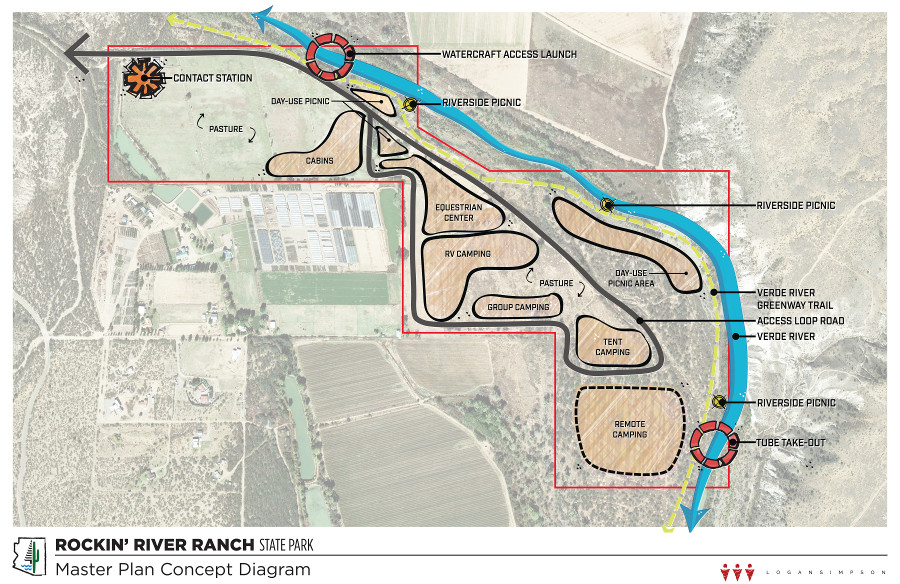
By October, visitors will be getting their first look at Arizona’s newest state park, Rockin’ River Ranch.
During an open house hosted by Arizona State Parks and Trails June 1 at Camp Verde Middle School, officials gave community members an opportunity to visualize what might exist on the property, which sits along more than a mile of the Verde River in Camp Verde’s Salt Mine region.
Gov. Doug Ducey has allocated $4 million in the 2017-18 Arizona state budget for the park, which is expected to include fishing, kayaking and wildlife viewing, stables, hiking trails, camping grounds and cabins and previously cultivated fields altered to host community events.
“We’re trying to cater to as many folks as possible,” Arizona State Parks North Region Manager Keith Ayotte said, but added that the master plan concept design presented to the public on Wednesday was “more of a talking point” and that his department is still trying work out the “correct ratios” of space allotted to use.
According to Wayne Colebank, vice president and landscape architect for park design firm Logan Simpson, “This [master plan] is intended for the community and attendees to respond to. It is not the final plan or a commitment from Arizona State Parks, only a tool for facilitating input.”
Prior to Arizona State Parks purchasing the property, Elaine Theriault operated Camp Verde Ranch, a horse boarding and breeding facility, on Rockin’ River Ranch for 22 years. Currently, there are seven historic buildings in need of renovation and repurposing.
Though Arizona State Parks has announced a “soft opening” with limited access, the park is still in its planning phase.
Among the challenges presented to the community in getting the park completed, Arizona State Parks listed the following:
- Construction of a new paved access road.
- 60 percent of the park sits in the 100-year floodplain.
- Integration of water rights irrigation requirements.
- Preservation of “critical environmental habitat.”
- Preservation of “critical cultural resources.”
- Integration with existing Verde River Greenway Plan guidelines.
- Construction on a limited budget.
Ayotte said that public input is key, as the park plan is far from fixed: “We need the comments …. Public feedback is what will establish this.”
A strong contingent of Salt Mine community members — up to a third of early participants, by Ayotte’s counting — were present for the open house, with many of them expressing reservations about the park.
Mike Noble, a longtime resident with property nearly adjacent to the property, called the plan a “disaster before it even starts,” wondering how the state will preserve anything in the 100-year floodplain and voicing concern about campers on the property consuming alcohol.
“It’s going to ruin the whole Salt Mine community,” Noble said. “We’re going to get together as a group and fight this sucker.”
“From the economic development aspect, state parks are a huge asset for any rural community lucky enough to have one,” Camp Verde Mayor Charles German said.
Town of Camp Verde Economic Development Director Steve Ayers agreed with the sentiment, saying, “It’s exciting to see this property developed as a state park. Credit goes to ASPT Director Sue Black and her team for their vision and for taking the initiative to get the project under way.
“The park will serve as a defining destination for visitors to Camp Verde, as well as a place for residents to get in touch with the Verde River.”
“We are working diligently, in coordination with the community, to keep the park a picturesque place for all to explore,” Black stated via press release.
According to ASPT’s current timeline, another public meeting will take place to discuss park options in August, followed by presentation of the master plan in September.
By March, ASPT will present a final plan and begin construction lasting until November 2018.
In December 2018, the park is expected to open fully.